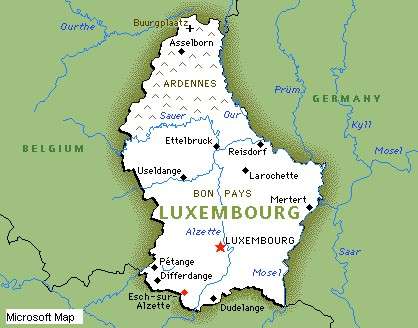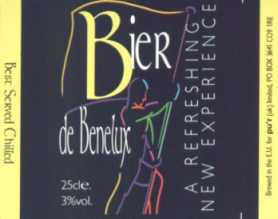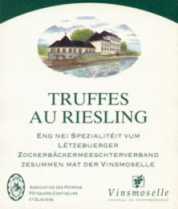 LUXEMBOURG
LUXEMBOURG
General | Land | Climate | Population | Language | Education | Economy
| Area | 2.586 kmē |
| Population | 415.870 |
| Capital | Luxembourg City |
| Government | Constitutional monarchy |
| Languages | Luxembourgish (Letzeburgesch), French and German |
 |
Officially Grand Duchy of Luxembourg, country in western Europe. Bounded by Belgium on the north and west, Germany on the east, and France on the south. With Belgium and the Netherlands, Luxembourg forms the Low, or Benelux, Countries. The country has an area of 2586 kmē. Not even big enough on most maps of Europe to contain the letters of its name. |
Topographically, Luxembourg consists mainly of the upper basins of the Sauer and Alzette. The highest point is Buurgplaatz (559 m) in the Ardennes Plateau in the north. The southern two-thirds of the country is a rolling plateau, the Bon Pays.
|
In a country this small, it's no wonder the climate doesn't vary much from one end to the other. Luxembourg has a moderate climate with a mean annual temperature of 10°C and a yearly rainfall of about 815 mm. |
 |
The inhabitants of Luxembourg are mostly of German and French background, but have a distinct national consciousness. The population of Luxembourg is about 415.870. The principal cities are centers of industrial production. The capital and largest city is Luxembourg City, also known as Luxembourg-Ville, with a population of about 76.000. Other important cities are Esch-sur-Alzette, Differdange, Dudelange, Sanem and Echternach. About 93 percent of the inhabitants of Luxembourg are Roman Catholics.
 |
The national language, called Letzeburgesch (Luxembourgian), is a Germanic language. French and German are also used in official publications and in schools. |
Education is compulsory for all children between the ages of 6 and 15, and illiteracy is almost nonexistent. The University Center of Luxembourg (1969) is situated in Luxembourg City.
Luxembourg is one of the world's most industrialized countries and has a high standard of living. Banking, manufacturing, agriculture (a.o. wine grapes), and tourism are the most important economic sectors. Luxembourg and Belgium conduct their foreign trade as a single entity. The two countries formed a customs and currency union in 1921, and in 1948 they entered a customs union with the Netherlands, designated as Benelux. Germany, France, Great Britain, and the United States are the principal trading partners of Belgo-Luxembourg. Luxembourg became a member of the European Coal and Steel Community in 1951. Six years later, Luxembourg, France, Belgium, West Germany, Italy, and the Netherlands signed two treaties creating the European Economic Community (now the European Union) and the European Atomic Energy Community. Luxembourg has about 275 km of railroad and about 5100 km of roads.
© All rights reserved. The Wine Labels World.